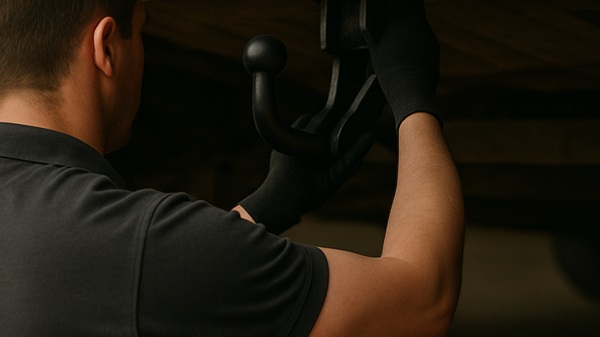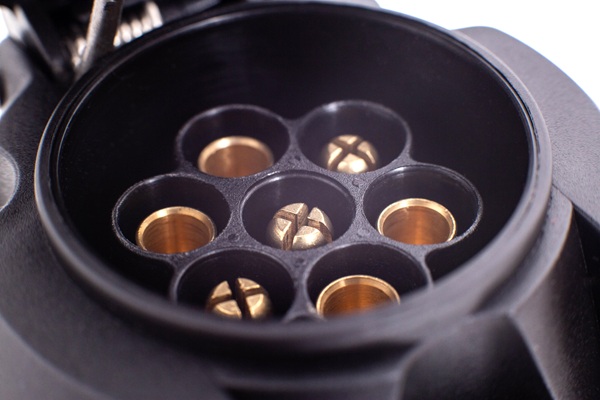Table of Contents
Does My Car Have a Tow Bar? A Complete Guide for UK Drivers
"Does my car have a tow bar?" is a question many UK drivers ask when considering towing a trailer or caravan. The answer depends on whether your vehicle came with a factory-fitted towbar or if one was installed aftermarket. According to recent automotive industry data, approximately 15% of UK vehicles are equipped with towing capabilities, though this varies significantly by vehicle type and manufacturer.

How to Check if Your Car Has a Tow Bar
The most reliable way to determine if your vehicle has a towbar is through physical inspection. Look underneath your rear bumper for a metal structure attached to the chassis. A towbar typically features a ball or hook mechanism and robust mounting points connected directly to your vehicle's frame.
Some vehicles have detachable towbar systems where the towing mechanism can be removed when not in use. In these cases, you'll find a mounting socket or protective cover where the towbar attaches. Check your boot area for a stored towbar component, as many drivers keep detachable units in their vehicle.
Expert Tip: Our AutoDoc mechanics recommend checking your VIN plate for towing capacity information. This metal plate, usually located in the engine bay or door frame, contains crucial technical details about your vehicle's specifications.






Factory-Fitted vs Aftermarket Installation
Modern cars rarely come with towbars as standard equipment. Most towing systems are installed aftermarket by specialist fitting service providers. However, some manufacturer models, particularly larger SUVs and pickup trucks, may include towing preparation packages from the factory.
Common Towbar Types
| Towbar Type | Description | Best For |
|---|---|---|
| Fixed | Permanently attached ball or hook | Heavy-duty towing, commercial use |
| Detachable | Removable towing mechanism | Occasional towing, maintaining vehicle aesthetics |
| Retractable | Electronically operated, folds away | Premium vehicles, convenience |


Checking Your Vehicle Documentation
Your vehicle's paperwork provides valuable information about towing capabilities. The owner's manual typically lists factory-installed equipment and maximum towing capacity. If you purchased your car used, previous service records might indicate towbar installation or modifications.
For vehicles registered after 1998, your V5C registration document may show modifications if the towbar was professionally installed and declared. However, many aftermarket installations aren't recorded on official documentation.

Understanding Towing Capacity and Approval
Even if your vehicle doesn't currently have a towbar, it may be suitable for towbar fitting. Check your vehicle identification number plate for gross train weight and maximum authorised mass specifications. These figures determine your vehicle's legal towing capacity.
Not all vehicles are suitable for towing. Sports cars, some hybrids, and lightweight city cars often lack the structural integrity or power for safe trailer operation. European law requires towbars to be EC approved and properly integrated with your vehicle's safety systems.
Vehicle Suitability Factors
- Mounting points: Adequate chassis reinforcement
- Engine power: Sufficient torque for towing
- Cooling system: Adequate capacity for additional load
- Electrical system: Compatible with trailer electrics




Electrical Systems and Wiring
Modern towbar installations require sophisticated wiring kits that integrate with your vehicle's electronics. Most contemporary vehicles use 13-pin electrics for comprehensive trailer communication, including brake lights, indicators, and reversing sensors.
The electric kit installation must be compatible with your vehicle's on-board computer systems. Advanced vehicles with lane change assisting, cruise control, and stability systems require vehicle specific wiring to maintain functionality.
| Electrical Option | Function | Compatibility |
|---|---|---|
| 7-pin electrics | Basic trailer lighting | Older vehicles, simple trailers |
| 13-pin electrics | Full trailer integration | Modern vehicles, caravans |
| Double electrics | Separate charging circuit | Caravans with internal systems |


Professional Assessment and Installation
If you're uncertain about your vehicle's towbar status or suitability, consult a qualified fitter or mobile fitting service. Professional assessment ensures compliance with safety regulations and manufacturer specifications.
Safety Tip: AutoDoc's technical experts emphasise that improper towbar installation can affect your vehicle's insurance coverage and safety systems. Always use certified fitters with appropriate warranties.
Towbar fitting costs vary depending on your vehicle type and chosen system. Fixed towbars typically cost less than detachable systems, while electrical integration can add significant expense for complex modern vehicles.
For comprehensive towing solutions, consider exploring towbar options and electric kit compatibility. Professional towbar fitting ensures optimal performance and safety compliance.
Understanding trailer hitch types and installation requirements helps you make informed decisions about your towing needs. For specific technical guidance, consult tow hitch meaning and adjustable height options.
Regular tow bar maintenance ensures long-term reliability and safety for your towing adventures.












